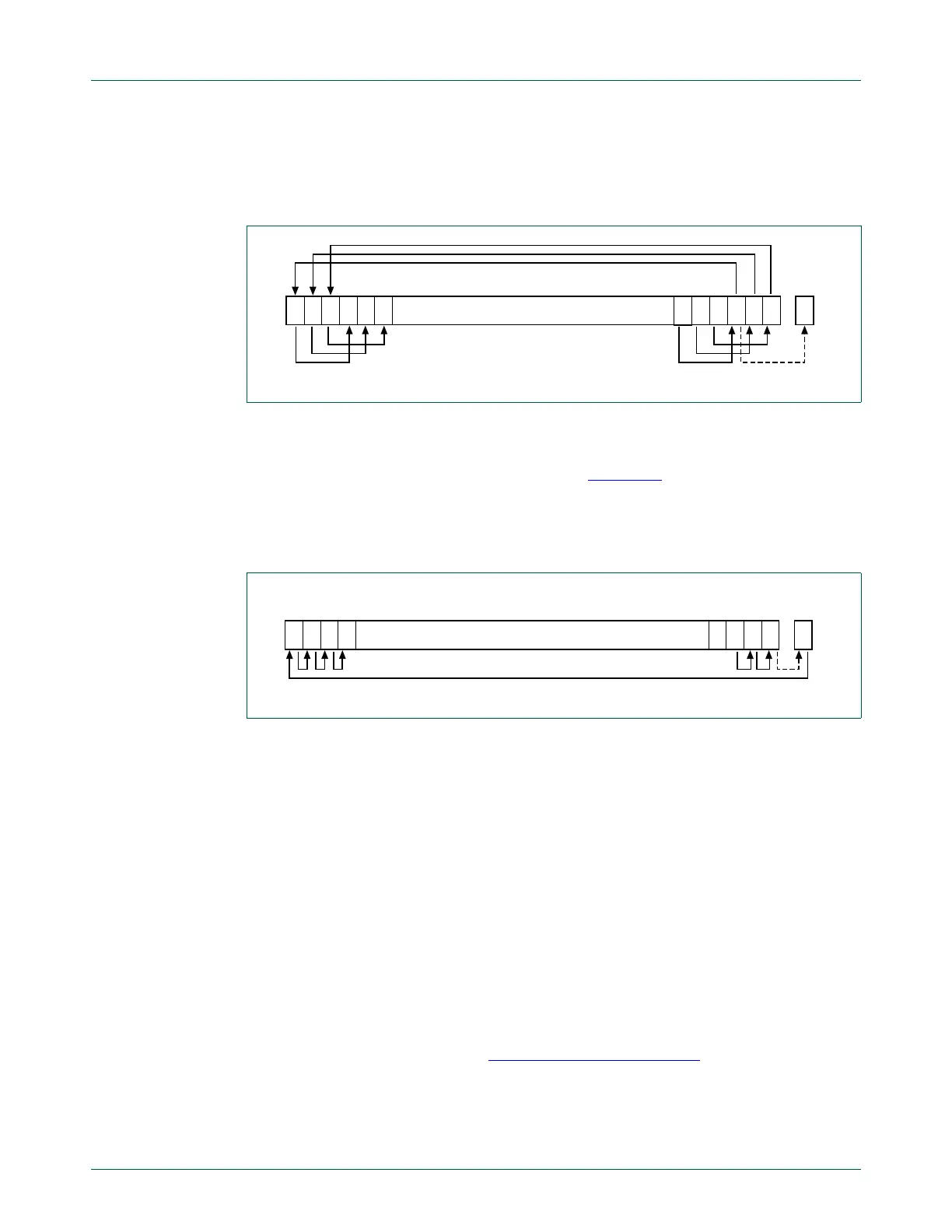UM10360 All information provided in this document is subject to legal disclaimers. © NXP B.V. 2013. All rights reserved.
User manual Rev. 3 — 20 December 2013 657 of 841
NXP Semiconductors
UM10360
Chapter 34: Appendix: Cortex-M3 user guide
• If n is 32, then the value of the result is same as the value in Rm, and if the carry flag
is updated, it is updated to bit[31] of Rm.
•
ROR
with shift length, n, more than 32 is the same as
ROR
with shift length n-32.
34.2.3.4.5 RRX
Rotate right with extend moves the bits of the register Rm to the right by one bit. And it
copies the carry flag into bit[31] of the result. See Figure 145
.
When the instruction is
RRXS
or when RRX is used in Operand2 with the instructions
MOVS
,
MVNS
,
ANDS
,
ORRS
,
ORNS
,
EORS
,
BICS
,
TEQ
or
TST
, the carry flag is updated to bit[0] of the register
Rm.
34.2.3.5 Address alignment
An aligned access is an operation where a word-aligned address is used for a word, dual
word, or multiple word access, or where a halfword-aligned address is used for a halfword
access. Byte accesses are always aligned.
The Cortex-M3 processor supports unaligned access only for the following instructions:
•
LDR
,
LDRT
•
LDRH
,
LDRHT
•
LDRSH
,
LDRSHT
•
STR
,
STRT
•
STRH
,
STRHT
All other load and store instructions generate a usage fault exception if they perform an
unaligned access, and therefore their accesses must be address aligned. For more
information about usage faults see Section 34.3.4 “
Fault handling”.
Unaligned accesses are usually slower than aligned accesses. In addition, some memory
regions might not support unaligned accesses. Therefore, ARM recommends that
programmers ensure that accesses are aligned. To avoid accidental generation of
Fig 144. ROR#3
Fig 145. RRX
